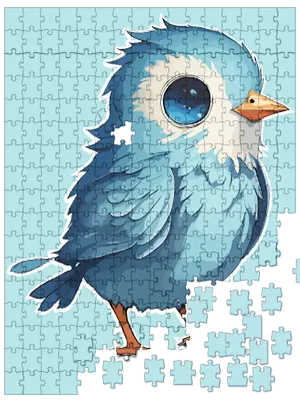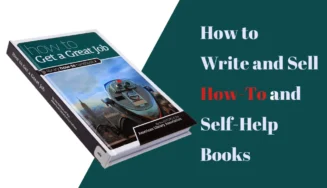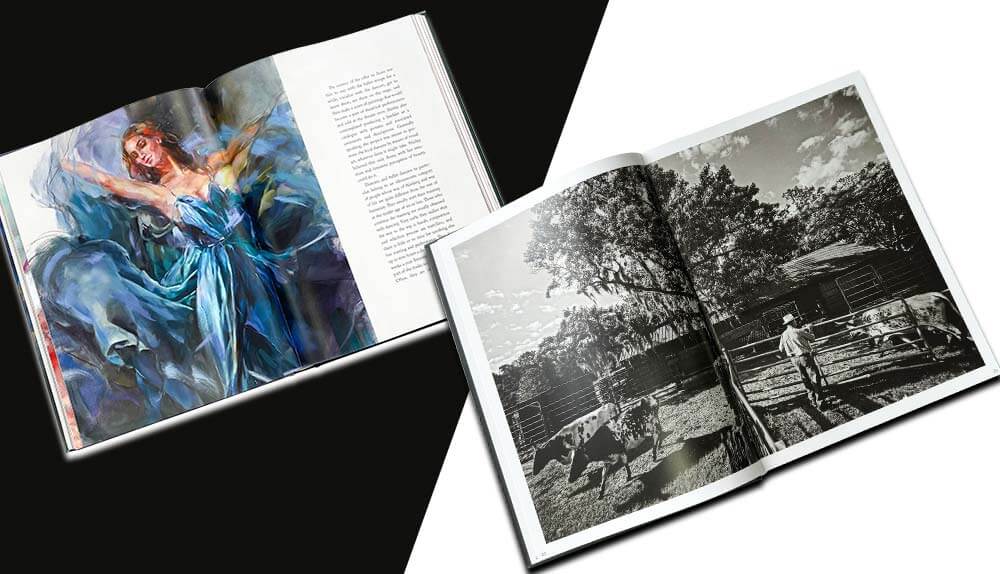Write books that teach others how to do something useful; share your knowledge and skills with the world!
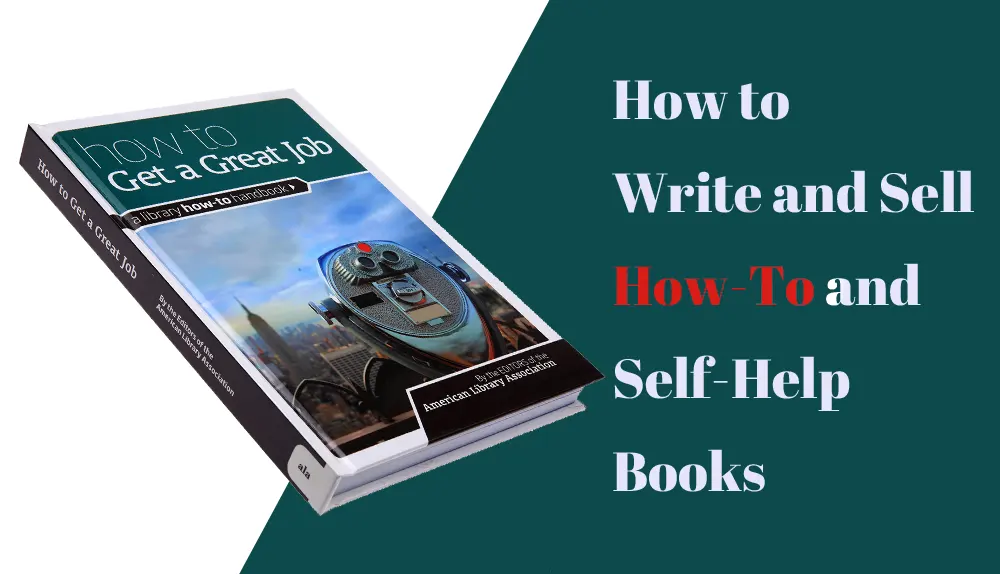
The most sought-after books are instructional
The instructional “how-to” book is always popular in print and also the most successful type of book sold through online marketplaces such as Amazon. Also, you can see how popular this genre is by checking other publications. Hundreds of magazines and thousands of websites publish millions of these pieces daily. If you can write clear, step-by-step instructions which teach others to do something practical, learn a new skill, or solve a problem, you can make a tidy living writing and selling how-to books for people who are not only happy but eager to pay for them.
Don't imagine how-to books are limited to the household, D.I.Y., health, craft, technical, and hobby verticals. There's a burgeoning market for self-improvement, interpersonal, and mental health books which teach the reader how to break bad habits, say, or build new ones; how to improve relationships by developing listening, communication, and self-management skills; how to find happiness through meditation, mindfulness practice, yoga, or tai chi; or how to improve memory, reading speed, or imagination, for example.
Anything which must be learned can be taught. And anyone who knows how to do something is an expert to someone who doesn't. So, assuming you have a reasonable grasp of language and good grammar, the how-to market is wide open. It can also be lucrative, with many quietly successful indie authors making a comfortable living or a good second income writing series to feed an ever-hungry audience.
How to research the how-to market
The first step in writing any kind of book to sell – whatever the genre – is always to research the market. Obviously, it makes sense to read as many books in your chosen niche, covering a similar topic to the one about which you intend to write, as you can. But it's also worthwhile looking at other formats, which can give you a quick but reliable overview of what is current in the field. For example, many dedicated instructional magazines and websites exist, covering every imaginable topic and interest.
It's always worth browsing your local newsstand or newsagent's shelves. Googling “how to” plus the topic, skill, or subject you want to write about will give you an idea of what's already been published and which niche markets are most vibrant..
The words “how to” are the most common in publishing today. A quick Google search turns up just under 20 billion results! When doing your market research, make a note of the many forms of “how to” you encounter. For example, you'll find the following:
- how to make
- how to find
- how to fix
- how to build
- how to be
- how to change
- how to get
- how to learn
- how to know
- how to develop
- how to grow
- how to write
The deeper you dig, the more you'll find. Keep a note of these terms and use them as sources of inspiration for your book as well as keywords for your online searches. As you discover what the most popular subjects are, make a list of what you already know that you could teach others, and a second list of what you could learn to teach by doing research. You don't always need to be a certified expert. Researching how to do something, and distilling the results into a useful step-by-step format that saves the reader time, is also acceptable. You should soon have three lists:
- what's currently selling
- what you already know and could teach
- what you could teach from research
You should focus on the “sweet spot” where either of the second two items on that list coincide with the first. So, while you can probably find a market for more obscure subject matter, you increase your chances of selling your book by focusing on a popular niche. The chances of coming up with a completely novel topic are practically zero. But that doesn't matter. Your personal experience with the subject, or original research, combined with a fresh approach and your individual writing style, should be enough to make your book stand out.
How to break into the how-to market
It's impossible to overstate the importance of market research if you want to sell your book. There's no point writing something readers don't want to read. So, knowing your market inside out is vital if you want to get a financial return for your effort.
While you can write about an infinite number of topics, it'll help you break into the how-to market if you start with what you already know and subjects with which you have first-hand practical experience. The advantages of sharing what you already know are these:
- you can save time on researching a subject
- personal experience improves your chances of finding an original “take” or “angle” on a well-worn idea
- you may be able to prove your authority (are you a member of a society, for example, or do you have qualifications in the field?)
- you can provide original photographs to illustrate your book (presumably, you have everything to hand and can take pictures of materials, tools, and processes, for example)
- once you publish your first book and it starts to sell, you can quickly follow up with a new book drawing on material not included in the first
If you have a good writing style with an excellent command of your language and ability to convey your excitement and enthusiasm for your subject, coupled with detailed market research and a determination to succeed, you have every chance of breaking into the how-to market.
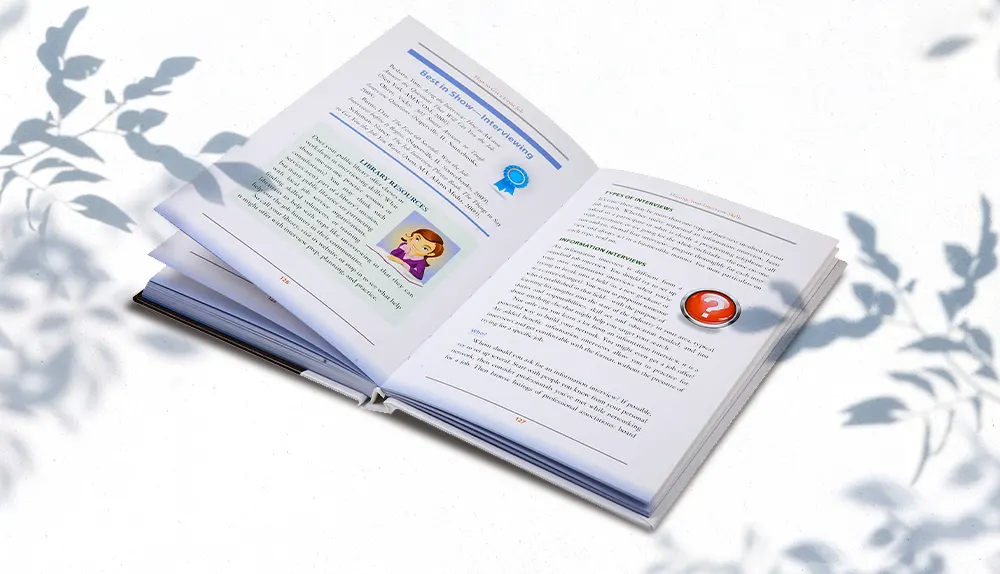
The many kinds of how-to books you can write
As you've seen from a quick Google search, the types of potential how-to books you could write are almost endless. But you can put most into one of two broader categories:
- Those that teach you how to do something (build a model airplane, grow bonsai trees, host the perfect dinner party, etc.)
- Those that teach you how to be or become something (such as a better lover, a more effective leader, happier, or more productive at work.)
You can think of these as “practical” how-to books and books in the “self-help” niche. In the first case, you'll usually teach something which requires materials and tools and produces physical results (a functional scale model, a repaired electrical device, a delicious dish for dinner.) In the second case, you may not require any tools or materials and the results will be less tangible (an improved relationship, a more efficient sales team, a sense of well-being, promotion.)
Remember when you sit down to write a how-to that you are not just a writer, but a teacher. Conciseness and clarity are what you must strive for above all else in your writing. If you were teaching in a classroom or running a workshop, your students could ask you questions about anything they didn't understand. But as a teacher-writer, you need to make sure that all your instructions and explanations are easy to understand and easy to follow the first time round. Your words are fixed in black and white. You don't get a second chance!
5 essentials for writing practical how-to books
Besides conciseness and clarity in your writing style, when you write a practical how-to book, it's vitally important that all your instructions are accurate and precise. Think about the order in which each step must be done, how much of each material your reader will need to complete the project, and double check all your quantities and measurements. A good practical how-to book includes all five of the following essentials.
Give information on getting the materials
You should, wherever possible, give ideas about where the reader can get hold of any materials and tools needed. An idea of the budget is also helpful. Make sure you've done your market research and that the nature of the project and the costs involved are appropriate for the audience.
Be specific
Don't use estimates for quantities and measurements. So, “a yard of cloth” is better than, “about a yard of cloth.” If you're not sure that a yard will be enough, then go over a little. The same goes for costs. While prices may vary in different parts of the USA, say, you can always say that an item will cost “no more than ten dollars,” or “between 10 and 15 dollars depending on the supplier.” You should also let the reader know how long a project is likely to take from start to finish, including preparation, drying time, or anything else.
Make it manageable
Break the project down into small, single-step tasks. Even a complex how-to aimed at an experienced programmer, for example, can be reduced to single code arguments with a clear explanation of the logic that underpins them. Don't assume too much prior knowledge on the part of the reader. Be as clear and simple as you can. Use short sentences, paragraphs, sections and chapters with clear, explanatory headings and subheadings.
Provide visuals
If you can provide informative photographs to accompany your text, or screenshots for the above example, you should do so. Make sure the photographs are clear and explanatory. If you're not much of a photographer, or can't photograph yourself doing the thing you're doing for practical reasons, get someone else to take the photos for you. Only attempt technical drawings if you have professional-level skills. But if you do, flaunt them, as that would be a powerful selling point from any reader's perspective.
Make it fun
Last but far from least, remember that your book must communicate not only the practicalities but also the excitement and pleasure of the true enthusiast. The best how-to books are colored by the personality and enthusiasm of the writer. This not only makes for a more engaging reading experience but also encourages and inspires the reader to have a go at the project for themselves, which, in the end, is what it's all about!
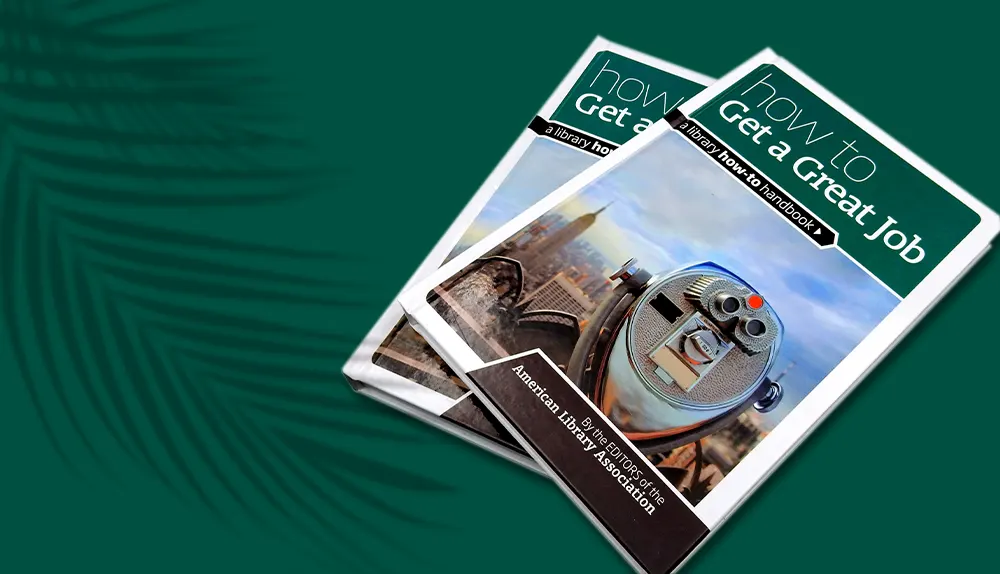
How to structure a self-help how-to book
The self-help style of how-to book has its own essential structure. Two types of self-help how-to books dominate the market. The first seeks to encourage and support a change in the way the reader thinks or feels: such as mindfulness, positive thinking, and motivational affirmations, for example. The second aims to help the reader change their behavior: habit replacement and forming, productivity techniques, interpersonal dynamics, confidence building, and so on.
It's important not to confuse the self-help book with the inspirational book. While both may seek to support increased well-being in the reader, either through a change in attitude or behavior, they have distinct approaches and solutions. An inspirational book typically offers a “spiritual” solution, often involving the invocation of a “higher power” such as God, angels, or the “higher self.” But the self-help book suggests practical steps the reader can take to — you guessed it! — help themselves to improve or change.
Whether the self-help book shows the reader how to solve a behavioral, emotional, psychological, or interpersonal problem, it almost always follows the same 4-step problem-solving structure. If you want your self-help books to sell, it's wise to follow this ground plan. The four steps are:
- State the problem
- Explain what causes the problem
- Describe how to solve the problem
- Encourage the reader to try out the solution
Remember throughout to use a warm, inclusive writing style, backing up your statements with authoritative quotations, sources, and examples. Make sure that you focus on one clearly defined problem and give the reader actionable steps to solve it, not just opinions or vague, moralistic advice. There's more to each of these steps than might be apparent at first, so let's examine them in more detail.
1. State the problem
This is your “lead” and may be one to three chapters depending on the length of the book. You should not only state the problem, but do it in a striking, emotion-provoking way. This is where your storytelling skills come into play.
One of the most effective techniques for a powerful lead is to show the problem with a descriptive example. You can use the third person pronoun or the second person singular pronoun. For example:
Third person: “Sandy Morris was almost at the point of despair. She knew that everyone thought she was lucky. She had a loving partner, a good job, a beautiful house, a couple of great kids. No money worries. No stress. A perfect life. So why was she exhausted all the time?”
Second person singular: “You may feel guilty or confused about why you're so exhausted all the time. After all, anyone looking on from the outside would think you had a pretty much perfect life and your last physical proved you're fit and healthy. But the external trappings aren't everything. If you're feeling tired all the time without any obvious cause, there is a reason for it.”
2. Explain the causes of the problem
Having introduced the problem and built an empathetic relationship with your reader, you can go on to explore the possible causes underpinning the problem they face. As you don't know them personally, you will not be able to offer them a precise, personal “diagnosis.” But you should have a good idea of the most likely and common causes of the difficulty they are experiencing. It's important in this section not to be dogmatic, but rather more exploratory in your approach. It's also vital to back up any claims you make with authoritative references and examples wherever possible.
3. Describe how to solve the problem
If the first two sections of a self-help how-to are the hors d'oeuvres, then this is the entrée. You should aim to offer up to five or six approaches, methods, techniques, practices, actions, or skills that could help the reader move beyond the problem toward a solution. Each must be explained, step-by-step, in easily understood detail, and accompanied by visual aids such as photographs, diagrams or infographics. Each should be in depth, so at least one and probably more than one chapter per approach or technique.
Once again, examples, testimonies, and references from authoritative sources, such as doctors, psychologists, therapists, or other professional practitioners, are essential. These demonstrate that you've done your due diligence and know what you're talking about. They also build confidence and trust and allow the reader to confirm the authenticity of the information you give; or deepen her knowledge on her own time once she's finished reading the book.
While the core principle of self-help is that a person can better themselves or their situation autonomously, it's also true that support groups and networks for people tackling the same issue falls into this category. If self-help groups can help a reader solve the problem that your book addresses, dig them out and give contact details in an appendix or side panels.
4. Encourage the reader to try out the solution
Readers come to self-help books to discover positive solutions to their problems. But they may have struggled and failed to overcome those problems many times in the past. So, along with the necessary practical information and instructions they can use to help themselves, many of your readers may need extra encouragement to take action.
Most self-help books end with a positive call to action. That can be as simple as a few sentences of encouragement, perhaps with a clear, actionable suggestion for the first, achievable step the reader can take immediately after they finish reading. But it may also be one or more short examples of others who found success after implementing the solutions you've explained. Either way, you should always end a self-help how-to book on a positive, upbeat note, which inspires your reader with the confidence to try out the suggestions you've made.
How to choose which how-to you should write
With such a broad spectrum of possibilities, how do you decide what to write? When you're deciding which kind of how-to you should write, you must take several factors into account. You must consider the results of your market research; knowledge, skills, and experience you already have; and research you could do.
1. Think about your market research
So, what are common and popular topics? Can you see a gap in the market you could fill? If you've identified projects or problems that readers buy books about again and again, what fresh, original angles can you come up with for your own books about those topics?
2. Mine your personal passions and experience
The easiest how-to subject will always be something you're passionate about and have experience with. Brainstorm everything you're interested in and know how to do. If you have a hobby, have you developed any special techniques or methods that make doing it easier, quicker, cheaper, or more enjoyable, that you could share?
3. Where could you find out about a topic you're not familiar with?
If you've identified a possible subject you think could sell, but you don't have personal experience, you'll need to do research. Besides hunting for information online and in your local library, could you join a relevant club, association, or society? Is there a conference or exhibition you could attend? Could you take a course? Do you know anyone you could interview about the topic?
The ideal subject about which to write your first how-to is one which falls at the intersection of all three of these factors. So, something you're passionate about and have experience with which is popular and you can back up with research and authoritative quotations or testimonies. Make a list of all the possible angles on the topic, then write several idea outlines, each one tailored to a specific possibility. By the time you've done that, you should see easily which will be the most exciting to write and about which you have the most enthusiasm and knowledge.
That way, you'll increase your chances of writing a good book, and the chance of selling more than one book on the same subject as series books are very popular and a great way to build your profile as an indie author. Although, be careful that you don't plagiarize yourself! Make sure that the angle is different, and the wording is original for every book you write.
Beyond writing the book
As a indie author writing to make a living, if you're just starting out, writing and selling how-to books can be a relatively easy way to break into the market. If you follow the advice given here, you stand as good a chance as anyone to see excellent returns on the time and effort you invest in researching, developing, writing, printing and self-publishing your best work.
But the rewards of writing how-to books — of either the practical or self-help variety — go beyond the pleasure of seeing your name in print and money in the bank. You can link to your social media profiles or blog, too, and people who have found your article useful or inspiring can say so in comments and posts. And they often do. There's nothing quite like the buzz of someone taking the time and trouble to thank you for the difference — however small — your writing has made in their lives.
You've probably already thought of several ideas for how-to books you could write. Everyone knows something that other people would like to know. You can help readers and make potentially money, too, by teaching someone else what you know. And now is as good a time as any to make a start!
Ready to get started? Talk to us!
If you have other questions or need clarification or help with any aspect of preparing your how-to or self-help book for print, shoot us an email to [email protected] or just call us on +1 951 866 3971 and we'll be delighted to do all we can to help you.




